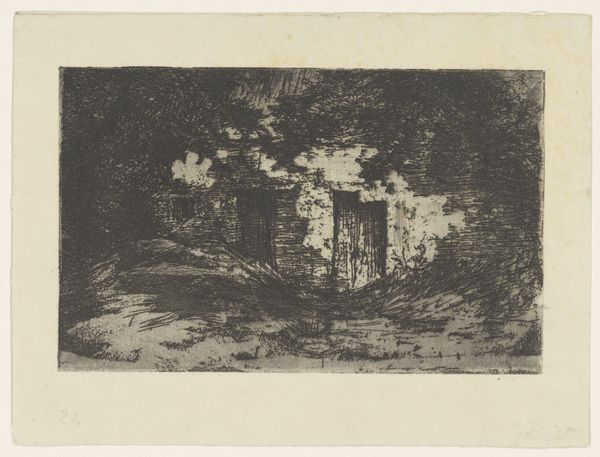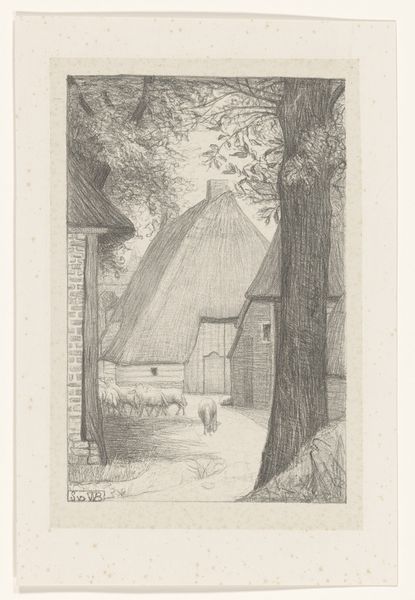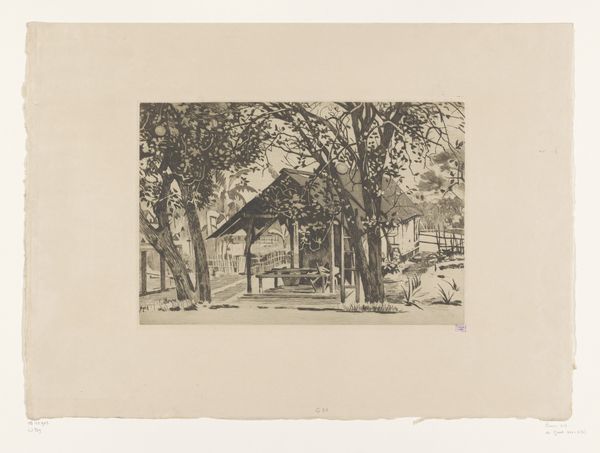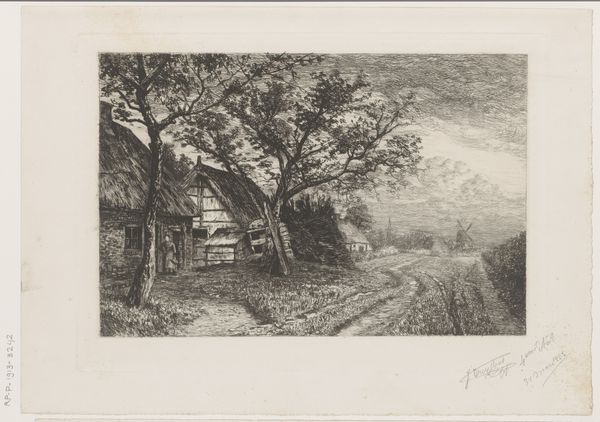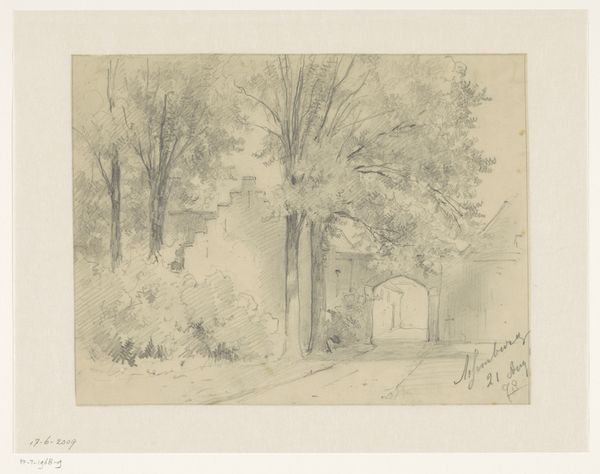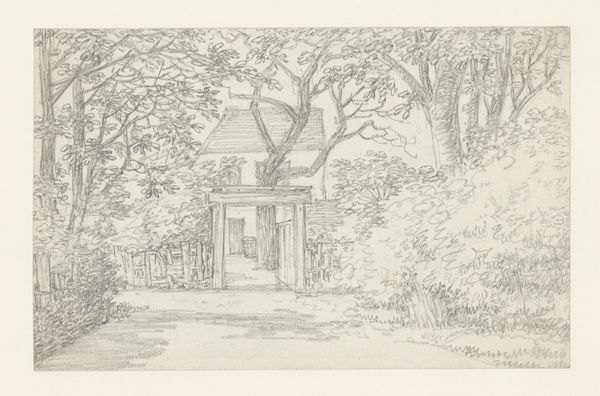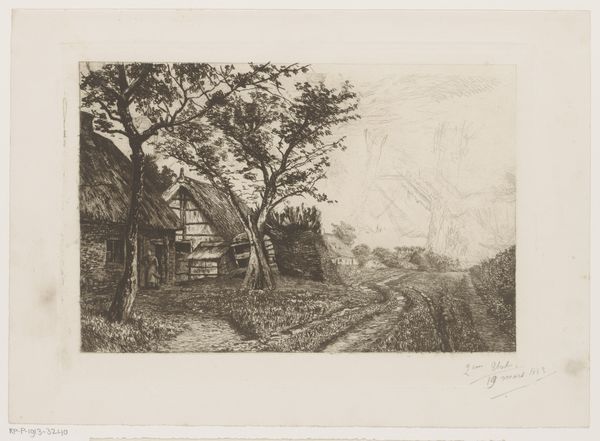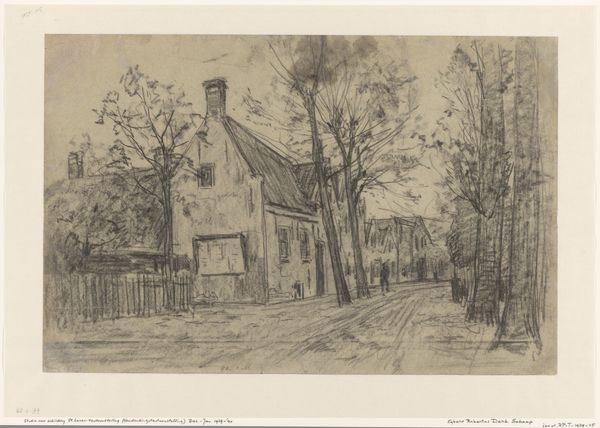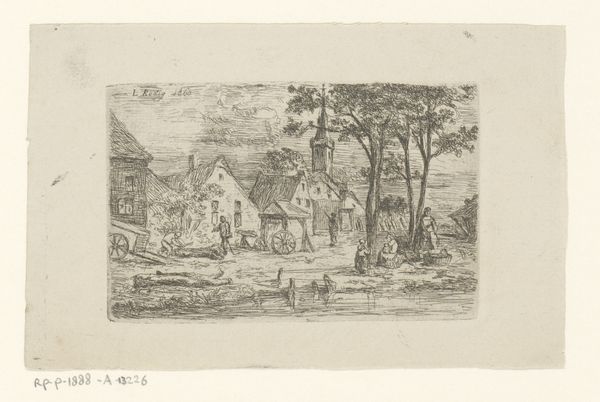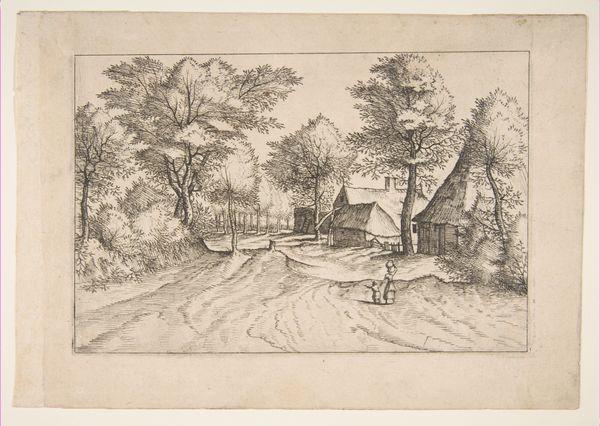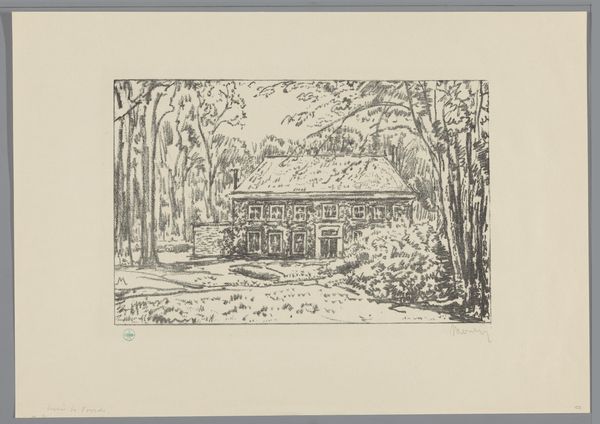
drawing, print, etching
#
drawing
# print
#
etching
#
landscape
#
etching
#
line
#
cityscape
#
realism
Dimensions: height 119 mm, width 207 mm
Copyright: Rijks Museum: Open Domain
Curator: This etching by Philip Zilcken, entitled 'Bridge Over a Pond and Child in a Village Street,' invites us into a seemingly quiet moment, somewhere between 1890 and 1930. It’s currently held in the collection of the Rijksmuseum. What are your first impressions? Editor: Oh, it feels wistful. Almost like looking at a memory. The muted tones, the tiny figure of the child… There's a delicate melancholy hanging in the air. Reminds me a little of a hazy afternoon dream. Curator: That sense of memory resonates deeply. I'm immediately drawn to the perspective; it's composed to create a clear intersection of both social space in the village street and private space suggested by the home beyond the bridge. The scale emphasizes this relationship, but what strikes me most is the interplay between line and shadow. How do you interpret Zilcken's approach to line in this composition? Editor: He's not afraid of sparsity. The lines are so thin, almost hesitant, especially in the foliage and the reflection on the water. But there's also a surprising density in the architecture. I think this creates a sense of stillness. What is withheld matters as much as what’s drawn, doesn't it? Curator: Absolutely. And the decision to include the child, almost centered but facing away from the viewer. It centers the experience, for me, around childhood—around growth in the confines of tradition, history, and social identity. One feels the need to ask, who are we as subjects encountering childhood? Where are the structures of community in that subjectivity? Editor: Yes, exactly. And it feels…gentle, despite the inherent constraint you mention. There is still a profound beauty in the everyday moment, the way the child is positioned creates a profound effect despite how 'ordinary' she is. I can almost hear the quiet sounds of village life. Curator: I completely agree. In examining these visual markers that comprise this small space, it’s not hard to imagine Zilcken was making a conscious observation on tradition versus modernism, in his time. Considering art historical moments beyond Zilcken's specific artistic production. Editor: Well, I'm going to take away a sense of quiet observation. The world doesn't need to scream at you; sometimes, it whispers secrets in the small details.
Comments
No comments
Be the first to comment and join the conversation on the ultimate creative platform.
